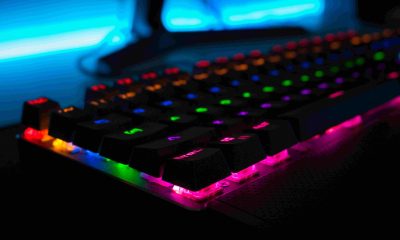What is a Fake Account?
When is a fake account something to be wary of? How are they identified?
Real Accounts
To avoid any confusion, let us say that a real account is created by a human for that human (or people they know) to use. It has a true purpose. They created it because it was to be used sooner rather than later.
Fake Accounts
On the other end of the spectrum, a fake account is one that’s designed to be used for other than normal purposes. For instance, it could be an email account to send out spam emails and not have that activity connected to the primary email address. Or it could be used to create a fake profile on Facebook for marketing purposes, to generate artificial Likes and Shares to simulate social activity.
Fake Accounts Can Be Created Through Proxies
Creating a fake social media account for connecting to the internet via a proxy gets around most of the blocking by social media sites. It is extremely difficult to detect a bot when using a proxy. Proxy providers offer various proxy types but the rotating one is perhaps the most useful. Companies like Smartproxy offer rotating proxies that change IP addresses each time they’re used. This allows for the creation of multiple social media accounts, one after the other, using a different IP address each time. Other verifications include completing an AI captcha to confirm your humanness. Some people who create fake accounts have systems to automatically complete or get around captcha systems too. Furthermore, using different web browsers is also quite effective in combination with the other methods mentioned above.
How Are Fake Accounts Created and Not Detected at the Time?
Sometimes a fake or forgery of a famous painting gets authenticated and confirmed as genuine for decades before something is spotted that doesn’t seem quite right. That could be what’s also on the canvas beneath the oil paint, the brush strokes, or one detail that’s incorrect in the reproduction. It can be ever so minor. And so, it is for fake profiles. They’re not always obvious right away. Social media networks like Facebook are stepping up their detection game with fake accounts. They’ve been active in removing millions of fake accounts. The detection methods are sometimes subtle like a minimal number of Likes or Shares when many followers are added. Facebook uses a learning AI model called Deep Entity Classification to do the checking and millions of accounts are disappearing as a result.
Can Bots Be Detected Easily?
It’s becoming more difficult for websites to detect bot activity on their servers. Along with using proxies to appear as if they are visiting from a different IP address that hasn’t been seen before on the site, bots use activities such as natural pauses between actions when filling out a web form, mouse movements, and other programmed actions attempt to mimic human interaction at the sign-up stage. Due to the sophisticated nature of some bots that create fake accounts repeatedly, companies like Facebook are having to also try and identify fake accounts after they’ve been created, based on user activity or lack thereof. Because people use a social profile in certain ways, active real ones tend to follow similar patterns of behavior. To maintain a fake account, it’s necessary to mimic that successfully too, otherwise, the account risks being deleted.
Separating Fact from Fiction
At this stage, it’s becoming increasingly difficult to spot a fake social media account from a real one. Certainly, a lack of regular activity, few friends, and other tell-tale signs provide some clues, but with a little effort, that can be faked too. Companies are now taking the threat from bots more seriously given that over 50% of activity online is from bots (both good and bad ones). It’s not quite Skynet with the robots taking over the planet in Terminator 2, but online, they are becoming more real than ever before. So, systems to separate fact from fiction – real people from bots – are urgently needed.
Ignorance Isn’t Necessary Bliss
Since we cannot tell if a Facebook profile is a real person or not, it’s problematic when you need to know for certain. For instance, if you’re using the Facebook Marketplace to advertise a product, it’s hard to know if the proposed purchaser is a real person or a bot. For sellers, this is a deterrent from using the marketplace system. What some people do when advertising a job posting is to add a secret code within the advertisement and request that all responders include it in their application. Not only does this clarify who has a real profile and is a human replying (those that fail to include the secret code can be ignored), but it rules out people with poor attention to detail too. Manual methods such as these are being increasingly used to find the real people in a sea of fake accounts. Ignorance isn’t necessarily bliss. The battle between bot creators and site owners continues unabated. Thank you for visiting techfollows.com.












